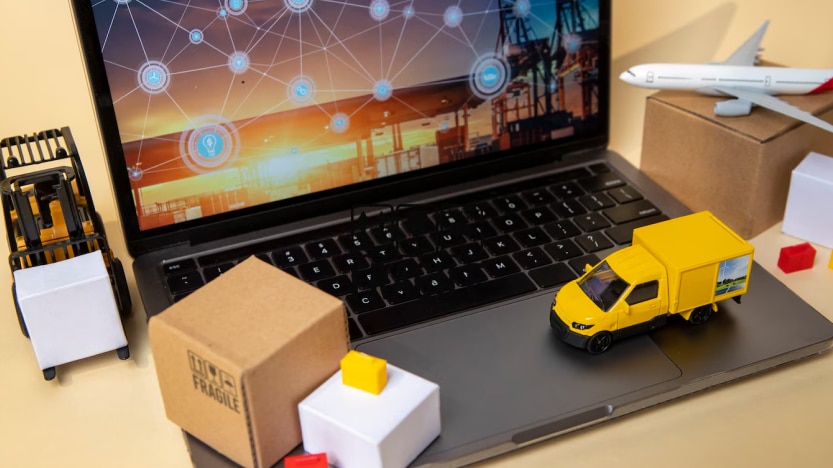The way businesses handle shipping and logistics has changed dramatically in recent years, thanks to advancements in technology. Gone are the days when logistics teams relied solely on pen and paper, manual processes, and guesswork to move goods from one place to another. Now, businesses are turning to digital logistics to streamline their operations, save money, and deliver a better experience to their customers. But what exactly is digital logistics, and how can it strengthen your business? Let’s break it down in simple terms.
What is Digital Logistics?
Digital logistics is the use of modern technology and data to automate and optimize the processes involved in managing a supply chain. Think of it as upgrading your logistics system from an old flip phone to a cutting-edge smartphone. Instead of relying on manual labor and spreadsheets, digital logistics leverages tools like cloud-based systems, artificial intelligence (AI), the Internet of Things (IoT), and even blockchain to make everything run smoother and faster.
At its core, digital logistics focuses on improving efficiency, reducing costs, and giving businesses greater visibility into every step of their supply chain. Whether it’s tracking inventory, managing transportation, or updating customers on their shipments, digital logistics ensures that all the moving parts of your business are connected and working in harmony.
How Digital Logistics Works
Digital logistics works by replacing manual processes with automated systems that gather, analyze, and share real-time data. Here’s an example:
Imagine a business shipping products to customers worldwide. Traditional logistics would involve tracking packages through paperwork, making phone calls to confirm delivery, and manually updating inventory records. With digital logistics, however, these processes are streamlined. Using technologies like GPS tracking and IoT sensors, the business can monitor every shipment in real time, automatically update customers with delivery statuses, and manage inventory levels instantly through cloud-based systems.
Some of the key areas where digital logistics is applied include:
- Inventory Management
- Transportation Management
- Warehousing
- Customer Notifications
- Supply Chain Analytics
Get Quote and Save UPTO 70% on your next shipping
The Technologies Behind Digital Logistics
Several technologies make digital logistics possible. Here are some of the most important ones:
- Cloud Computing: Allows businesses to store and access data from anywhere, ensuring seamless communication between teams and partners.
- Internet of Things (IoT): Devices like sensors and GPS trackers provide real-time information about shipments, such as their location, temperature, or condition.
- Artificial Intelligence (AI) and Machine Learning (ML): Help businesses analyze large amounts of data to optimize routes, predict delays, and make better decisions.
- Blockchain Technology: Offers a secure way to record and share data across the supply chain, improving transparency and reducing fraud.
- Automation: Robots and automated systems speed up tasks like sorting, packing, and shipping.
Why is Digital Logistics Important?
Digital logistics is a necessity in today’s fast-paced, globalized world. Here’s why:
- Customer Expectations Are Rising: Thanks to companies like Amazon, customers now expect fast, reliable, and hassle-free delivery. Digital logistics enables businesses to meet these expectations by streamlining operations and improving transparency.
- Competition is Fierce: In the shipping and logistics industry, being efficient is a competitive advantage. Companies that adopt digital logistics can cut costs, reduce errors, and deliver a better customer experience, helping them stand out in a crowded market.
- Supply Chains Are More Complex: With goods moving across borders and through multiple channels, managing a supply chain has become more challenging than ever. Digital logistics simplifies this process by providing end-to-end visibility and control.
- Data is the New Gold: Businesses that harness the power of data can make smarter decisions, anticipate problems before they occur, and improve their overall efficiency. Digital logistics provides the tools needed to turn raw data into actionable insights.
What are the Benefits of Digital Logistics for Your Business?
Switching to digital logistics can transform your business in several ways. Here’s how:
1. Improved Efficiency
Automating repetitive tasks like data entry, shipment tracking, and inventory updates frees up your team to focus on higher-value activities. For example, instead of spending hours updating spreadsheets, your employees can work on improving customer service or planning new strategies.
2. Cost Savings
Digital logistics helps businesses identify inefficiencies and eliminate waste. For example, route optimization tools can reduce fuel costs by finding the shortest or fastest delivery routes. Similarly, better inventory management can minimize overstocking and storage costs.
3. Real-Time Visibility
With digital tools, you can track your shipments, inventory, and warehouse operations in real time. This level of visibility ensures that you’re always aware of what’s happening in your supply chain, reducing the risk of delays, stockouts, or other issues.
4. Enhanced Customer Experience
Customers appreciate being kept in the loop. With real-time tracking and automated updates, you can provide a seamless experience that builds trust and loyalty.
5. Data-Driven Decision Making
Digital logistics provides businesses with detailed analytics that can be used to improve processes, predict trends, and make informed decisions. For instance, data from past shipments can help you identify peak delivery times and plan accordingly.
6. Scalability
As your business grows, digital logistics makes it easier to scale your operations. Cloud-based systems can handle increased data and demand without the need for major infrastructure investments.
Challenges of Implementing Digital Logistics
While the benefits of digital logistics are clear, it’s not without its challenges. Here are some common hurdles businesses face when making the switch:
- Cybersecurity Risks: Digital systems are vulnerable to hacking and data breaches. Businesses need to invest in robust security measures to protect sensitive information.
- Integration Issues: Bringing new technology into an existing system can be tricky, especially if you’re working with outdated infrastructure.
- Data Privacy Concerns: With more data being collected and shared, businesses must ensure they comply with regulations like GDPR to protect customer information.
- Training and Adoption: Employees need to be trained to use new tools and systems effectively, which can be time-consuming and costly.
- Initial Investment: While digital logistics can save money in the long run, the upfront costs of technology and infrastructure can be a barrier for some businesses.
How to Get Started with Digital Logistics
If you’re considering adopting digital logistics, here are some steps to get started:
- Assess Your Current System: Identify areas of your supply chain that could benefit from digitalization. For example, do you struggle with inventory management or shipment tracking?
- Choose the Right Tools: Research technologies and platforms that align with your business needs. Look for solutions that are easy to integrate with your existing systems.
- Train Your Team: Provide training to ensure your employees are comfortable using the new tools. This will help you get the most out of your investment.
- Start Small: Begin with a pilot project to test the waters. For instance, you could automate a single process, like order tracking, before rolling out digital logistics across your entire supply chain.
- Partner with Experts: Work with third-party logistics providers or consultants who specialize in digital logistics. They can help you navigate the complexities of implementation.
Get Quote and Save UPTO 70% on your next shipping
Final Thoughts
Digital logistics is revolutionizing the shipping and logistics industry by making supply chains smarter, faster, and more efficient. From real-time tracking to automated inventory management, it offers countless opportunities for businesses to save time and money while delivering a better experience to their customers.
However, transitioning to digital logistics requires careful planning, investment, and a willingness to adopt change. By starting small and focusing on the areas where you can have the biggest impact, you can position your business for success in the digital age.
FAQs About Digital Logistics
What industries can benefit from digital logistics?
Digital logistics is beneficial across industries like retail, manufacturing, healthcare, e-commerce, and agriculture. Any business with a supply chain can use digital tools to improve efficiency, reduce costs, and enhance customer satisfaction.
How does digital logistics support sustainability?
Digital logistics minimizes environmental impact by optimizing routes to reduce fuel consumption, improving inventory management to prevent overstocking, and supporting paperless operations. These practices lower carbon footprints and contribute to greener supply chains.
Can small businesses implement digital logistics?
Yes, small businesses can adopt scalable digital logistics solutions tailored to their needs. Cloud-based systems and affordable tools allow even startups to optimize supply chain processes without requiring significant upfront investment.
How does digital logistics handle international shipping?
Digital logistics simplifies international shipping by automating customs documentation, tracking shipments in real-time across borders, and ensuring compliance with international trade regulations, reducing delays and errors in global supply chains.
What role does AI play in digital logistics?
AI analyzes data to forecast demand, optimize delivery routes, and predict potential delays. It also identifies patterns to improve decision-making, ensuring smarter, faster, and more efficient logistics operations.

I’m Tammy Waller, a supply chain and logistics specialist with over 10 years of expertise. I’ve been an author and SFL employee for over 10 years.
As an author, I’ve been able to teach others. I love guiding users through supply chain and logistics operations.
I have substantial experience managing logistics operations, supply chain management, transportation, inventory management, and warehousing in shipping-moving and logistic services. I’ve worked on many worldwide logistics and supply chain projects, honing my abilities in negotiating rates, scheduling shipments, and managing vendors.



